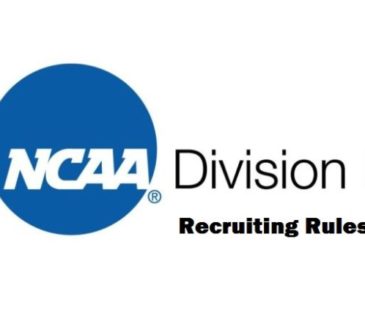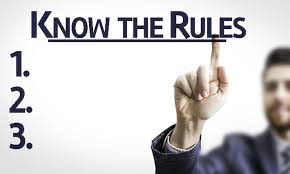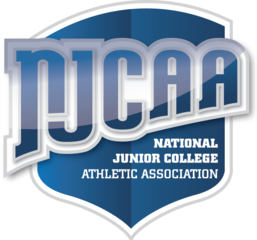

You read articles all the time about the high school freshman who has verbally committed to a Division I School. Many families see this and scratch their heads. How can that student be in contact with a coach so early on? Most of the parents I speak with think that the NCAA rules prohibit communication before Sept 1 of a student-athlete’s junior year? In this article, we cover how coaches and athletes get around the NCAA rules and how athletes are connecting with college coaches before the official NCAA recruiting periods.
What do the NCAA rules say?
The NCAA recruiting rules are written to protect student-athletes from getting too many calls and visits from coaches. As a way to protect student-athletes, the NCAA created a recruiting calendar that dictates when and how coaches can contact recruits. These are called “recruiting periods,” which include the contact, evaluation, quiet and dead periods. For more information see our article here.
The rule of thumb for most sports is June 15 after your Sophomore Year or September 1 of their junior year. While these rules limit when and how coaches can contact recruits, coaches often recruit and offer scholarships to athletes well before their junior year.
How does a high school freshman get a scholarship before coaches can contact them?
The NCAA rules state a college coach can’t “recruit” an athlete before September 1 of their junior year, so it might seem non-compliant for recruits to get offered and be accepting scholarships as freshmen or younger. You can review the NCAA recruiting calendars here. It is not non-compliant and here’s how it happens:
- “Recruiting” has a very specific definition by the NCAA. Recruiting as defined by the NCAA means a college coach is actively reaching out to an athlete. While the NCAA limits how and when a coach can initiate contact with a recruit, there are no rules prohibiting an athlete from calling or reaching out to a college coach via email or Social Media.
- Man Up Tip: Many families will have their high school/club coach set up a call with college coaches. The high school/club coach will let the college coach know when to expect a call from the recruit. When the recruit calls, the coach is allowed to answer the phone. However, coaches are not able to call recruits back or leave voicemails for the recruit until September 1 of the athlete’s junior year of high school. Because college coaches can’t contact the recruits or families directly, they utilize their club or high school coaches to arrange a way for them to meet with or talk to the recruits.
- These athletes are getting noticed by being at national events. The hard truth about athletes getting scholarship offers as 8th graders is they are very clearly some of the top athletes in the country for their age. When an athlete receives an early scholarship offer, it is very likely they are already competing at the national level in their sport. If you want to get interest as an underclassman, you need to be at the elite events/tournaments and championship games.
Be Proactive in your Recruiting
If you aren’t getting recruited as an 8th grader, not all hope is lost, but if you dream of playing Division I Lacrosse, you need to get busy.
Coaches can talk to athletes if the athlete initiates the contact
The NCAA rules prohibit coaches from calling, emailing or visiting an athlete before their junior year. However, if the athlete initiates the contact with the coach, they can talk. Here are the most common ways this happens:
- Athletes schedule a call with a coach. A third party—like the athlete’s coach—will tell the college coach that the athlete will be calling at a specific time. When that athlete calls and the coach answers, they can talk about whatever they want.
- Athletes make unofficial visits to the coach on their campus. If an athlete or family visits a college campus, they are free to meet with the coach and tour the campus. The key here is the athlete needs to make sure the coach knows they are coming and has agreed to meet with them. This is usually done through coordinated calls ahead of time.
Use online tools to monitor your recruiting interest
Online profiles like the ones provided by AllStarRecruits.comm allow athletes to see who follows them and who has been looking at their profile. The challenge for recruits who can’t be contacted by coaches is that a coach can’t tell the athlete they are interested. If the recruit can see that a coach is looking at their profile, however, they can take that as a signal that the coach may be interested, and they can try to establish contact or provide regular updates to the Coach.
Use your current coaches to establish contact
A student-athlete’s high school or club coach is the perfect person to help them establish connections with college coaches before the contact period. It is not uncommon for elite recruits’ coaches to arrange a visit or phone call with college coaches interested in them. Without this third party, families would rarely be able to take advantage of the major rules loophole.







